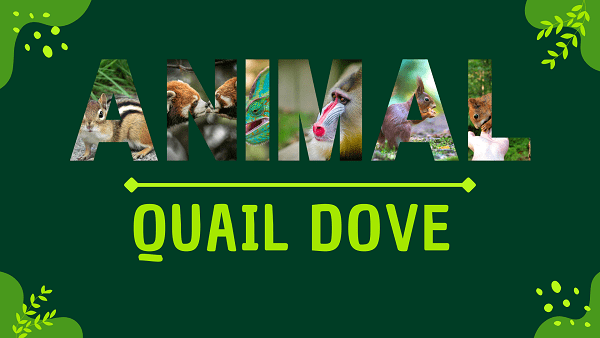
Quail Dove | Facts, Diet, Habitat & Pictures
Quail Dove Overview
Appearance
The Quail Dove is a medium-sized bird with an elegant appearance. It displays rich, earthy colors, with a chestnut-brown head, neck, and breast that gradually transitions to olive-brown on the back and wings. Its plumage features subtle patterns and intricate scaling.
The eyes are encircled by a distinctive blue eye ring, and its bill is relatively slender. Quail Doves have a graceful posture, often with their tails held high, and they exude a sense of understated beauty in their overall appearance.
Origins And Evolution
The Quail Dove, a member of the Geotrygon genus, has an evolutionary history spanning millions of years. Fossil evidence suggests the presence of their ancestors in the Miocene epoch. Over time, these birds adapted to various environments across the Americas.
Their evolution is marked by the development of specific traits for ground-dwelling, such as sturdy legs and a preference for terrestrial habitats. Quail Doves belong to the family Columbidae, which includes pigeons and doves.
Quail Doves are known for their elusive nature and are often challenging to spot in their dense woodland habitats. They have played a role in indigenous cultures, revered for their elusive beauty. Their evolutionary journey highlights their adaptation to terrestrial life in lush forests.
Behavior and Lifestyle
Quail Doves are typically solitary and elusive birds known for their terrestrial lifestyle. They inhabit dense woodlands and tropical forests, foraging on the forest floor for seeds, fruits, and insects. Their behavior is mostly diurnal, meaning they are active during the day, although they can occasionally be seen foraging during early morning and late afternoon.
Quail Doves are skilled at remaining hidden among the undergrowth, using their cryptic plumage and secretive behavior to avoid predators. During courtship, they may display distinctive behaviors such as cooing calls and tail-raising displays to attract mates.
Quail Dove Scientific Classification
- Kingdom: Animalia
- Phylum: Chordata
- Class: Aves
- Order: Columbiformes
- Family: Columbidae
- Genus: Geotrygon
Quail Dove Locations
- Caribbean islands
- Central America
- South America
- Mexico
- Parts of the United States, such as Florida and Texas
Fast Facts
- Name: Quail Dove
- Scientific Name: Geotrygon spp.
- Habitat: Forests, Islands
- Diet: Seeds, Insects
- Physical Features: Ground-dwelling, Plumage
- Nocturnal: No, Diurnal
- Solitary: Pair-bonded
- Unique Order: Columbiformes, Columbidae
- Lifespan: 5-10 years
- Conservation Status: Varies, Least Concern
- Fun Facts: Gentle cooing, Ground-nester
Physical Characteristics
- Color: Varied plumage
- Skin Type: Feather-covered
- Top Speed: Swift flier
- Lifespan: 5-10 years
- Weight: Lightweight
- Length: 8-12 inches
- Age of Sexual Maturity: 1 year
- Age of Weaning: N/A (precocial young)
Quail Dove FAQs
What is a Quail Dove?
A Quail Dove is a type of bird belonging to the genus Geotrygon, known for its terrestrial habits and distinctive plumage.
Where are Quail Doves found?
Quail Doves are primarily found in woodlands and tropical forests of the Caribbean, Central America, South America, and some parts of North America.
What do Quail Doves eat?
Quail Doves primarily feed on seeds, fruits, and insects found on the forest floor.
Are Quail Doves good fliers?
Quail Doves are capable of short flights but are primarily terrestrial birds, preferring to forage on the ground.



